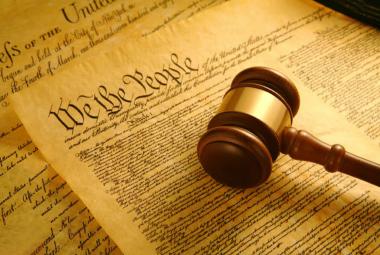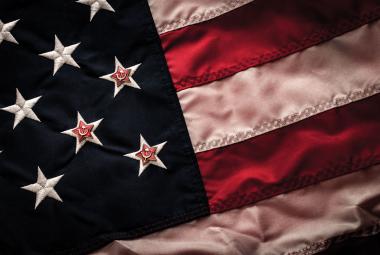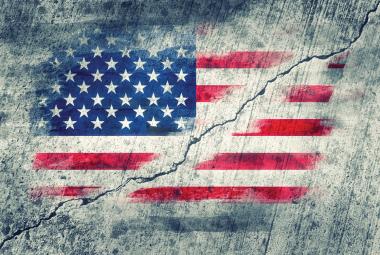America’s “War on Drugs,” which officially began in 1971, was repopularized in 1984 by then-President Ronald Reagan. Our current failed economic policies may be setting the perfect storm for the pharmakeia referenced in Revelation:
Neither repented they of their murders, nor of their sorceries, nor of their fornication, nor of their thefts.
Revelation 9:21
This description would cover all sides of the “War on Drugs.” Of particular concern today is the drug methylamphetamine—most commonly called “crystal meth,” or simply “meth.” It is absolutely one of the most dangerous and addictive drugs on the black market.
Methylamphetamine has an interesting history. In its legal form, it has been a recognized substance since 1893. To this day, it is approved by the U.S. Food and Drug Administration for the treatment of both ADHD and obesity.
However, in higher doses, this recreational street drug produces a euphoric reaction that users believe takes away the cares of the world by increasing alertness, energy, enhancing self-esteem, and increased sex drive for up to 12 hours.
The inevitable downside includes fatigue and depression—and a highly addictive behavior.
Meth has come to be widely known, even by its users, as one of the most dangerous and most difficult to quit of all illegal drugs.
So why its ever-increasing popularity? Economics.
Crystal Meth
Crystal meth is relatively cheap. It has been referred to as “the poor man’s cocaine.” During cocaine’s heyday, meth was nearly extinct on the illegal market.
Reagan’s “War on Drugs” effectively raised the prices for illegal drugs by imposing greater risks and thus higher costs on production, distribution, and consumption. Black-market entrepreneurs needed to find a way to reduce their risks and their costs.
Their answers came in the form of highly potent marijuana, crack cocaine, and crystal meth. Drug-rehab centers, emergency rooms, and morgues meet the victims on a near-daily basis.
Meth, however, is a potent pharmakeia trap. It looks like an easy panacea and a quick answer to escape the troubles of the day—or a way to get a little extra money to put food on the table.
The basic ingredient required to produce meth is a common component in cold medications. In an effort to restrict the supply of this ingredient, the government has placed additional restrictions on the purchase of these over-the-counter medications.
They are now only sold in pharmacies, are limited to a one-month supply, and in some states purchases are tracked to prevent buying the products at multiple pharmacies.
In response, meth producers are recruiting large numbers of intermediaries, including their friends, relatives, college students, children, and the homeless to buy cold medicine.
A recent review by the Associated Press indicates literally thousands of people are being lured into this drug trade because the cold medicine can be sold to the meth labs for up to a 500 percent profit.
Law enforcement officers were surprised at the numbers. One St. Louis County Sergeant responded,
People that normally wouldn’t cross the line are willing to do so because they think it’s such a sweet deal, and because of the economy.
According to one economist, the “scourge of crystal meth is another example of the ‘potency effect’ or what has been called the ‘iron law of prohibition.’”
Prohibition
Historically, when government legislates a prohibition, and increases enforcement and penalties on alcohol or drugs, it predictably results in a substitution to more potent and dangerous substances.
While some economists, legislators and civilian groups would advocate an end to the “War on Drugs” as a means to pull back from the “iron law of prohibition” and its side effects, that decision has proven difficult for the government. It has its own economic incentives in the “War on Drugs”—civil asset forfeiture statutes.
The Lure of Civil Asset Forfeiture
These statutes allow law enforcement agencies to seize money and property without the owners being convicted, indicted, or arrested for a crime—indeed, even if the owners are acquitted.
Any assets that are believed to be involved with illicit drugs can be seized. As high as 80% of people who have property forfeited have never been charged with a crime.
In a reversal of the usual “innocent until proven guilty” principle, owners must prove by a “preponderance of the evidence” that their property is innocent of the charges.
Abuses to civil asset forfeitures became so rampant, the Civil Asset Forfeiture Reform Act of 2000 (CAFRA) was passed. However, the ensuing Patriot Act drafted two years later weakened some of the CAFRA reforms.
For the first time, in 2009 the U.S. Dept. of Justice’s Assets Forfeiture Fund held more than $1 billion in net assets.
According to the “Congressional Submission, U.S. Department of Justice Assets Forfeiture Fund FY 2011 Performance Budget,” the overall operations of seizing assets in the “War on Drugs” will not end anytime soon.
The Assets Forfeiture Fund (AFF) was created by the Comprehensive Crime Control Act of October 12, 1984 to be a repository of proceeds of forfeitures under any law enforced and administered under the Department of Justice. According to the report:
The President’s Budget includes $20,990,000 in definite authority for expenses of the Assets Forfeiture Fund for 2011 to support the Department’s Strategic Goal 2: to prevent crime, enforce federal laws and represent the rights and interests of the American people. AFF also supports DOJ (Department of Justice) efforts to improve financial performance and expand electronic government (e-gov) (e.g., security and cost savings).
It is interesting to note that the performance challenges of the budget include new legislation and case law, changing demographics, political decisions, and the internationalization of criminal organizations.
Illegal drugs are big business—both for those involved in production and distribution, and for those involved in enforcing the laws.
In the middle are those caught in the trap of pharmakeia.
Money Laundering
On quite another front, the financial salvation of drug money laundering activities proved too much for big banks with international banking departments to ignore.
Last April, a story surfaced during the investigations behind the financial institute bailouts.
Of the $200 billion the Treasury Department invested via the Capital Purchase Program to prop up troubled banks, Wells Fargo & Co. received $25 billion on October 28, 2009. Wells Fargo then acquired Wachovia Bank—and a scandal of “Biblical proportions.”
In April 2006 a DC-9 jet landed in the port city of Ciudad del Carmen on the Gulf of Mexico. Mexican soldiers were waiting to intercept it and found 5.7 tons of cocaine, valued at $100 million. More importantly, a paper trail was left on the plane that led to Sinaloa narcotics trafficking cartel. A 22-month investigation by the U.S. Drug Enforcement Administration, the Internal Revenue Service, and other agencies followed.
The plane had been purchased with money laundered through one of the biggest banks in the U.S.—Wachovia.
Authorities on both sides of the border uncovered billions of dollars in wire transfers, traveller’s cheques, and cash shipments through Mexican exchanges into Wachovia accounts.
Wachovia was put under immediate surveillance for failing to maintain an effective anti-money laundering program.
What was significant to investigators is that the period of laundering began in 2004, which coincided with the first escalation of violence along the U.S.-Mexico border that ignited the current drug wars.
While criminal proceedings were never brought against an individual, proceedings were brought against Wachovia.
In March 2010, Wachovia settled the biggest action brought under the U.S. Bank Secrecy Act. The bank paid $110 million in forfeiture to federal authorities and incurred a $50 million fine for failing to monitor cash used to ship 22 tons of cocaine.
More shocking, the bank was sanctioned for failing to apply the proper anti-laundering strictures to the transfer of $378.4 billion—a sum equivalent to one-third of Mexico’s gross national product (GDP)—into dollar accounts from so-called casas de cambio (CDCs) in Mexico, currency exchange houses with which the bank did business.
Wachovia was not the only culprit. At the height of the 2008 banking crisis, Antonio Maria Costa, then head of the United Nations office on drugs and crime, said he had evidence to suggest the proceeds from drugs and crime were “the only liquid investment capital” available to banks on the brink of collapse. “Inter-bank loans were funded by money that originated from the drug trade,” he said. “There were signs that some banks were rescued that way.”
The Economics of Pharmakeia
The failure of the economic recovery is setting the stage for the economics of pharmakeia.
From the parent trying to put food on the table, to the addict finding relief from life under the influence of the drug, to the financing of government agencies, to the “legal” banking sector washing hundreds of billions of dollars in blood money from murderous drug cartels, the lure appears too great to resist—“and they repented not.”
Notes:
- http://www.justice.gov/criminal/afmls/pubs/pdf/strategicplan.pdf
- http://www.guardian.co.uk/world/2011/apr/03/us-bankmexico-drug-gangs
- http://www.bloomberg.com/news/2010-07-07/wachovia-s-drughabit.html
- http://www.alternet.org/econ-omy/147564/wall_street_is_laundering_drug_money_and_getting_away_with_it/
- http://www.ms-nbc.msn.com/id/42232161/ns/us_news-crime_and_courts?GT1=43001#
- Drug facts: methamphetamine. Office of National Drug Control Policy,
2007. Accessed May 15, 2007, at: http://www.whitehousedrugpolicy.gov/drugfact/methamphet-amine/index.html






